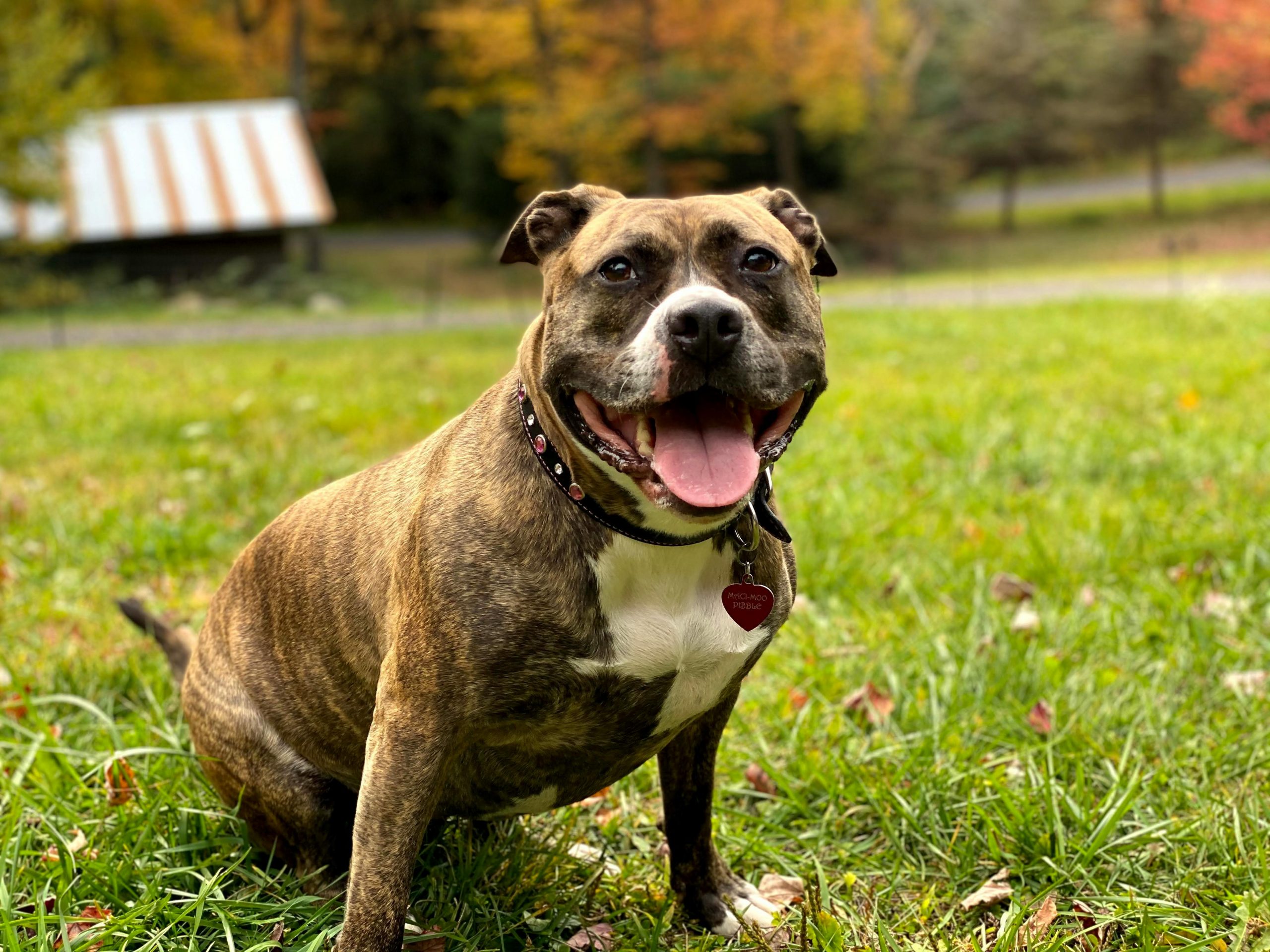The Staffordshire Bull Terrier, affectionately known as the Staffy, is a breed renowned not only for its courageous and loving temperament but also for its striking coat colors and patterns. This breed exhibits a remarkable range of hues that can suit almost any preference, whether you’re drawn to the understated beauty of solid tones or the vivid contrasts of more dynamic markings. Originating from England, where they were bred for bull-baiting, Staffordshire Bull Terriers today are cherished companions known for their loyalty and affection towards families, especially children. Their coat, short and easy to maintain, comes in several stunning variations that are officially recognized and celebrated by kennel clubs around the world. Here, we explore seven of the most stunning color variations of the Staffordshire Bull Terrier, each bringing its unique charm and beauty to this lovable breed.
1. Brindle
Brindle Staffordshire Bull Terriers display a beautiful blend of colors that create a tiger-stripe effect on their coat. This pattern ranges from light, sandy colorations to deep, dark shades, which can appear almost black. The brindle pattern is highly valued not just for its aesthetics but also for the way it highlights the muscular build and distinctive lines of the breed. A brindle Staffy is often a head-turner in parks due to this striking pattern. Owners appreciate the pattern’s practical benefit too: the darker stripes can mask some of the dirt and dust that dogs inevitably pick up during their adventures.
2. Blue
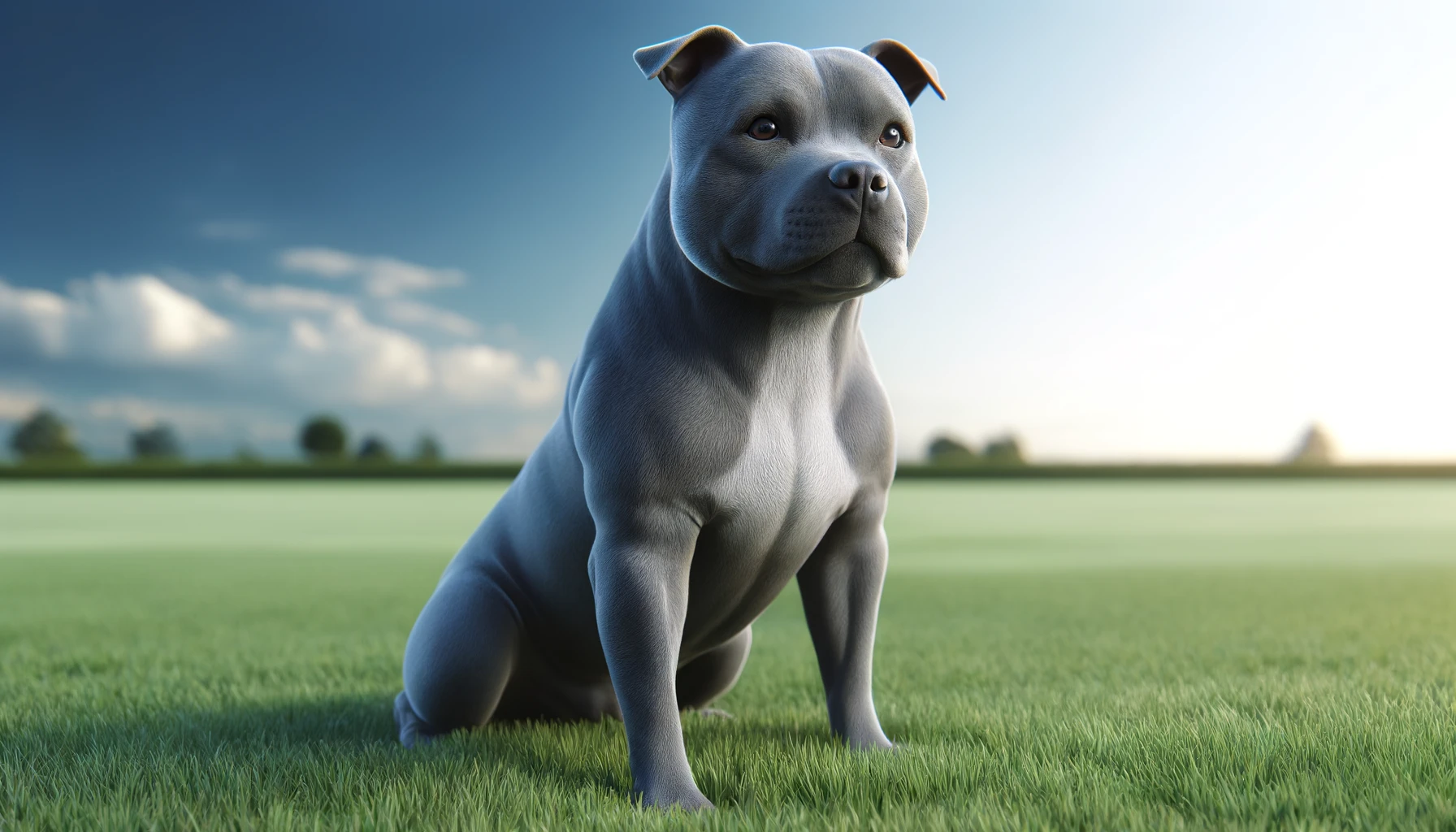
Perhaps one of the most sought-after colors in the breed, the blue Staffordshire Bull Terrier boasts a sleek, steel-gray coat that shines spectacularly under sunlight. This color isn’t a true blue; instead, it’s a diluted black that results in a stunning gray hue. The blue coat is usually uniform, but white markings may appear on the chest and feet. While highly popular, potential owners should be aware that blue Staffies can be prone to skin issues, so regular vet check-ups and a good diet are essential to maintain their coat’s health and vibrancy.
3. Black

Solid black Staffordshire Bull Terriers exude a sleek, powerful look that complements their robust physique. The intense depth of the black coat, coupled with their piercing eyes, can give these dogs a majestic appearance. While purely black Staffies are relatively common, they still stand out due to their glossy, mirror-like coat when properly groomed. Like all Staffies, they require regular exercise to manage their energy levels and maintain their muscle tone, which is beautifully highlighted by their dark fur.
4. White
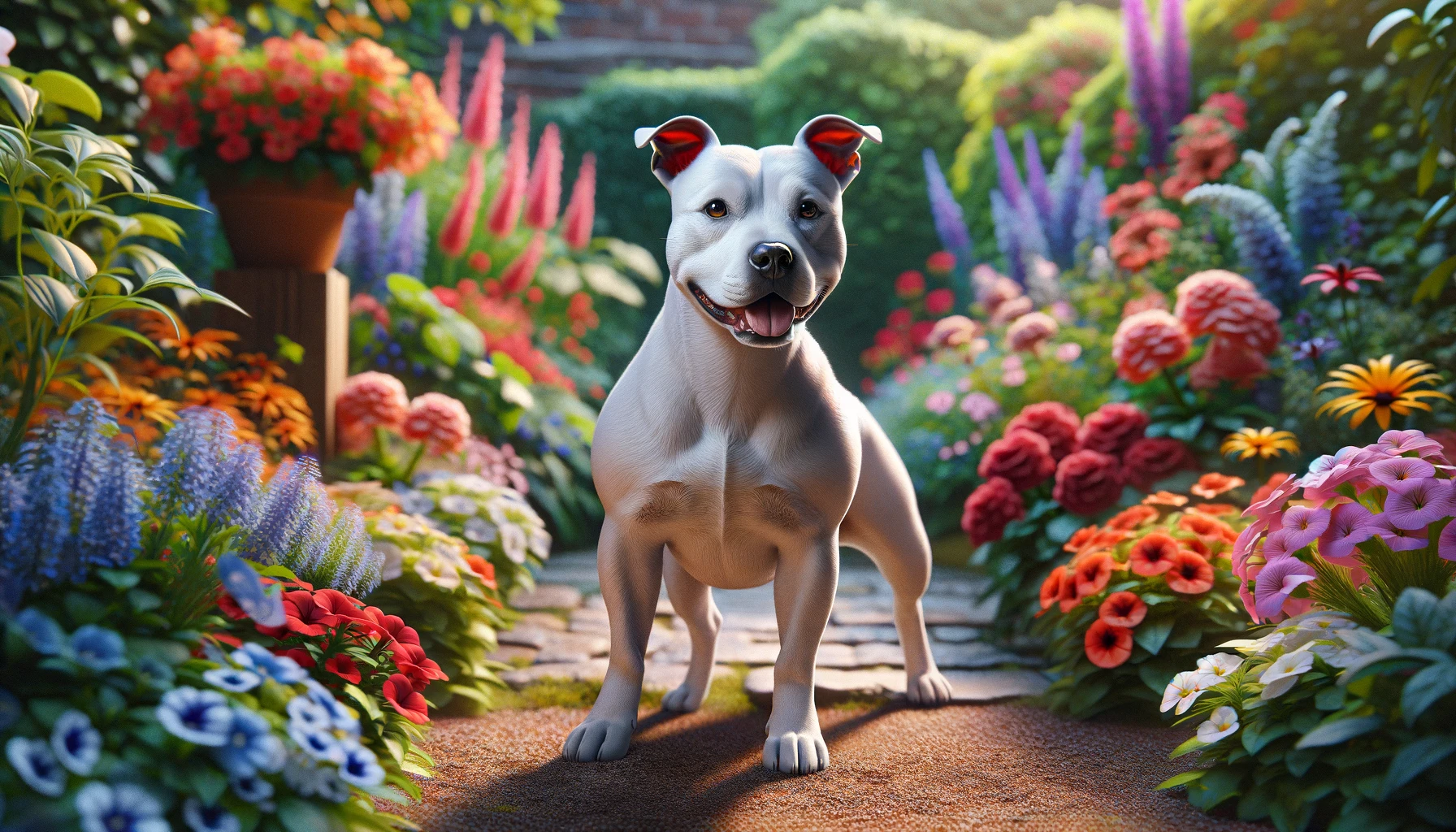
White Staffordshire Bull Terriers are striking in their purity and simplicity. Their snow-white coats can range from bright white to a more cream shade, often accompanied by patches of other colors on the body, particularly the head. The white coat makes it easy to spot ticks and fleas, which can be particularly beneficial during the warmer months. However, white Staffies may be more susceptible to skin cancer and sunburn due to their light pigmentation, requiring owners to take preventive measures such as using sunblock or limiting sun exposure.
5. Red
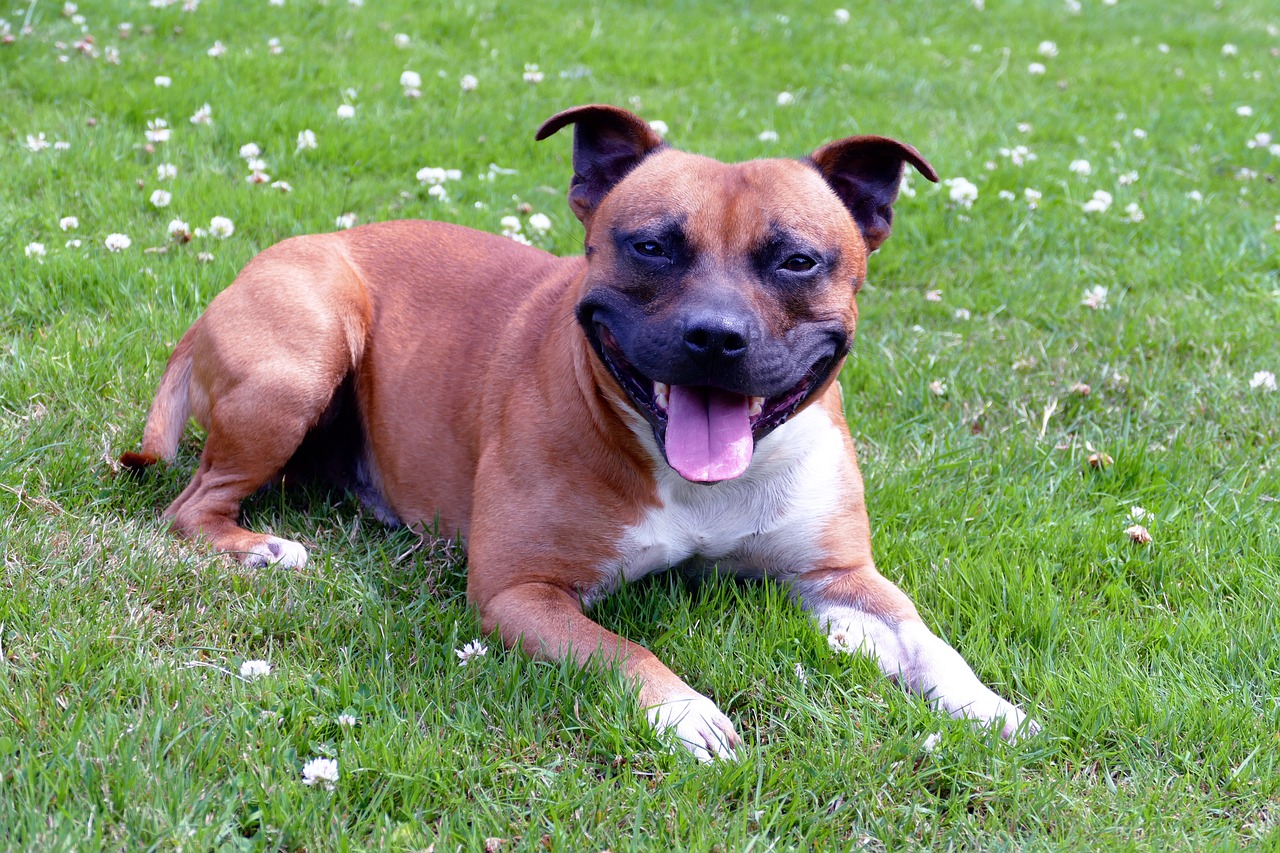
Red Staffordshire Bull Terriers have a warm, rich coat color that ranges from deep rust to bright copper. This color is particularly eye-catching and is enhanced by the breed’s short, glossy coat. Red Staffies often carry a charismatic presence, matched by their energetic and affectionate personalities. Their vibrant coat does require some maintenance to keep it looking its best, including regular bathing and brushing to remove dead hair and distribute skin oils evenly across their coat.
6. Fawn
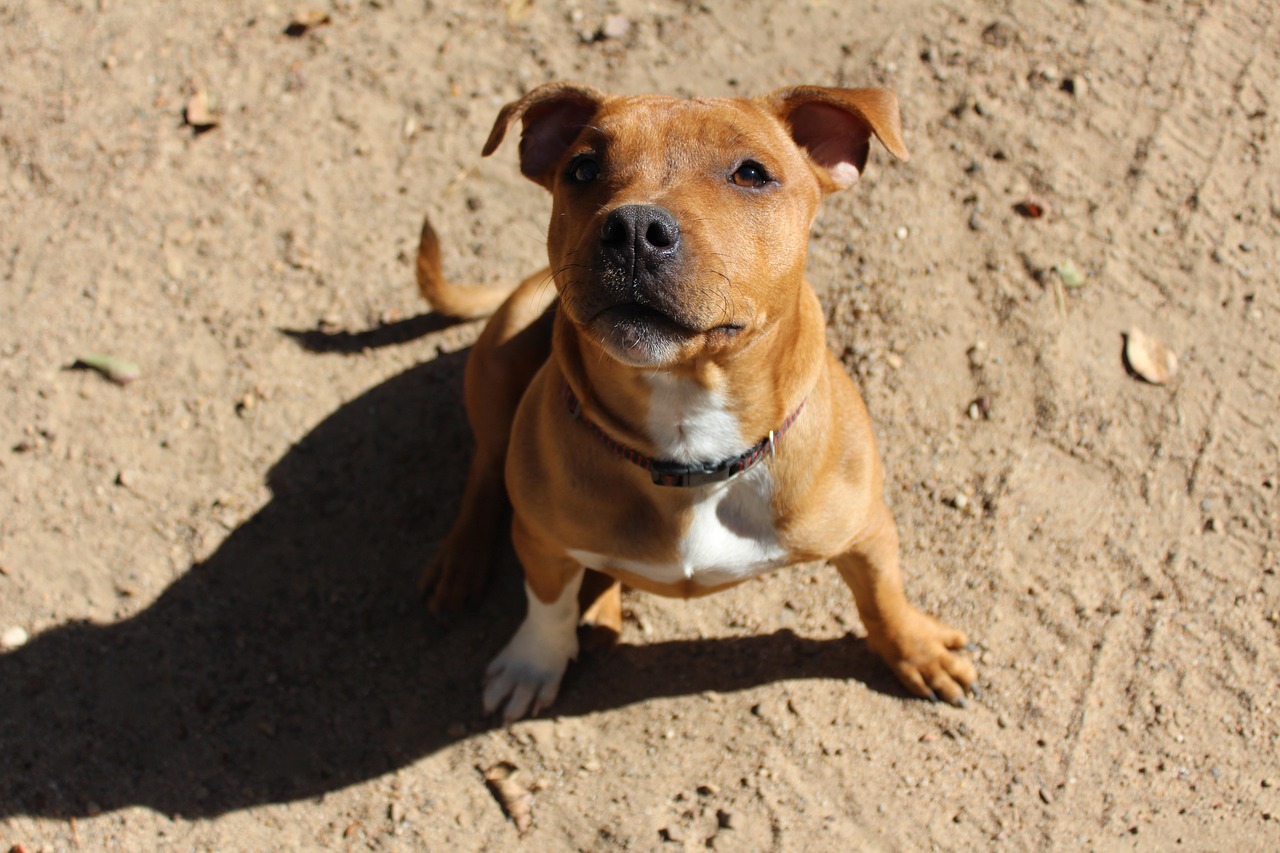
Fawn Staffordshire Bull Terriers present a beautiful pale tan to light brown coat, often with a golden cast that shines in the sunlight. This softer coloration provides a more subdued alternative to the more vibrant colors and is equally appealing. Fawn Staffies often have a gentle appearance, which mirrors their typically calm demeanor, although, like all Staffies, they harbor plenty of energy and playfulness. Their light-colored coats can sometimes show dirt more readily, so they might need more frequent grooming.
7. Pied
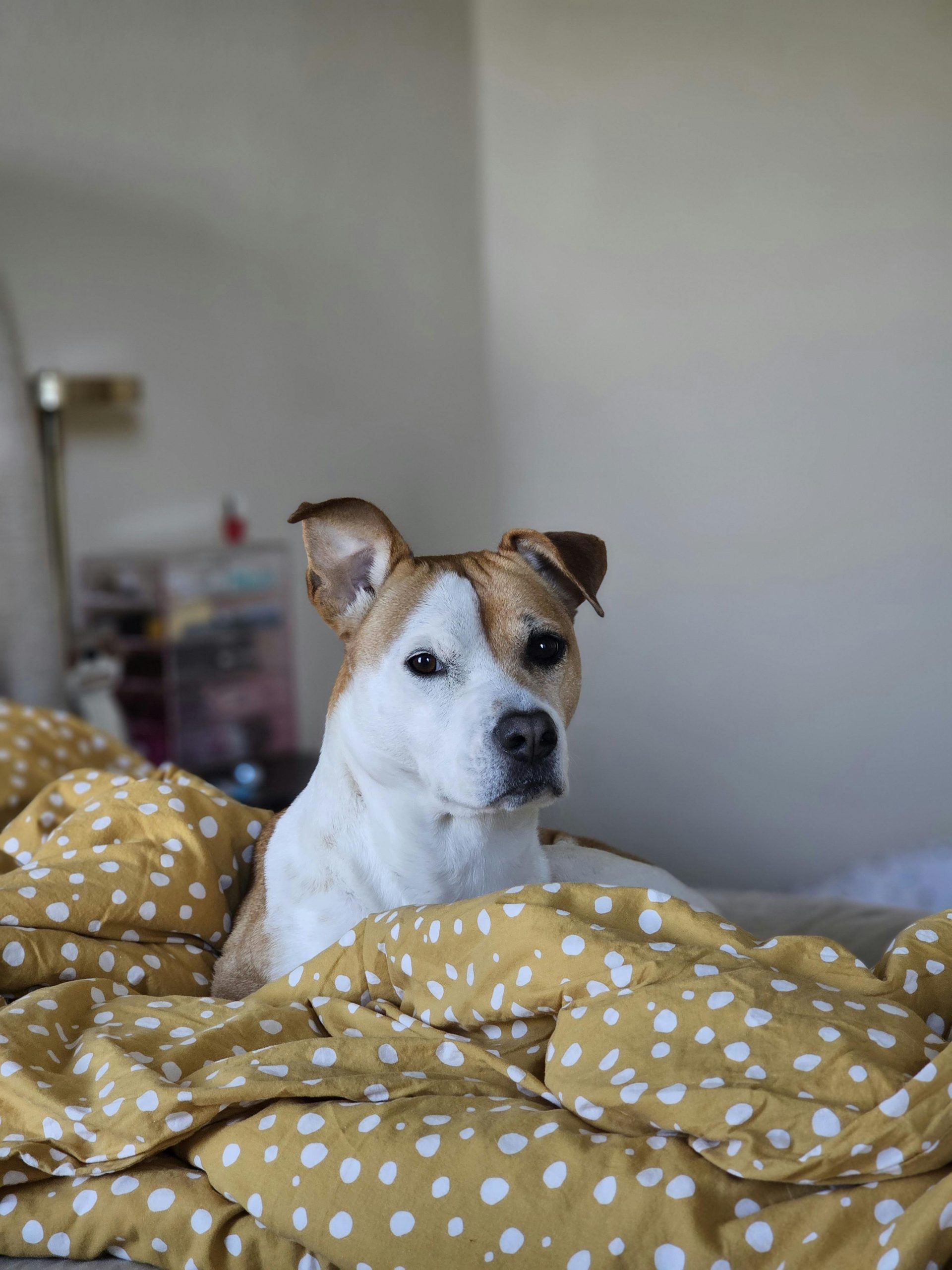
Pied, or piebald, Staffordshire Bull Terriers feature a predominantly white base with large patches of another color, such as black, blue, or brindle. This coloration is dramatic and makes each pied Staffy unique due to the random placement and size of the patches. The contrast between the white and darker colors can be quite striking, and many pied Staffies exhibit a charming, almost patchwork appearance that endears them to enthusiasts of the breed.
In conclusion, the Staffordshire Bull Terrier’s array of coat colors and patterns not only adds to the aesthetic appeal of the breed but also reflects its varied and rich history. From the dramatic stripes of the brindle to the sleek sheen of the blue, each color variation has its own story and charm. Whether you’re an admirer from afar or a dedicated owner, the diverse beauty of these dogs is undoubtedly something to cherish.
Frequently Asked Questions About Staffordshire Bull Terrier Colors
1. What are the officially recognized colors of the Staffordshire Bull Terrier?
Officially, the Staffordshire Bull Terrier is recognized in several coat colors. These include black, blue, brindle, fawn, red, white, and any of these colors with white. Any shade of brindle and any shade of brindle with white are also recognized. This wide range of colors allows for a diverse appearance within the breed, making each dog distinct. The recognition of these colors ensures that breed standards are maintained, promoting the health and well-being of the dogs as these colors are known to have been traditionally associated with the breed, reducing the risk of health issues linked to more exotic or non-standard colors.
2. Is the blue coat color associated with any specific health issues?
Blue Staffordshire Bull Terriers carry a specific color gene that is associated with a coat color dilution. This dilution can sometimes lead to a condition known as Color Dilution Alopecia (CDA), which might result in hair thinning or hair loss. Moreover, skin issues are not uncommon in blue Staffies, including increased sensitivity and susceptibility to skin infections. Owners of blue Staffies need to maintain regular veterinary check-ups and provide appropriate skin care to manage this risk. Proper diet and regular grooming can also help maintain the health and quality of their coat.
3. Can Staffordshire Bull Terriers be multicolored?
Yes, Staffordshire Bull Terriers can indeed be multicolored. One common multicolored pattern is pied, which involves a primarily white coat with patches of another color such as black, blue, or brindle. These patches can vary significantly in size and placement, leading to a high degree of individual variation among pied Staffies. This pattern is recognized and appreciated within the breed standard. Potential owners need to know that each pied Staffordshire Bull Terrier is unique, with no two dogs having the same pattern.
4. What causes the brindle coloration in Staffordshire Bull Terriers?
Brindle coloration in Staffordshire Bull Terriers is caused by a genetic trait where dark stripes are superimposed over a base color, which can range from light tan to deep red. This pattern is the result of the interaction between the agouti gene and the melanocortin 1 receptor (MC1R) gene. The brindle pattern is a classic and highly desired look in many dog breeds, including the Staffy. It gives each dog a distinctive, tiger-striped appearance that can vary widely from one dog to another in both pattern intensity and color depth.
5. How common are pure white Staffordshire Bull Terriers?
Pure white Staffordshire Bull Terriers are less common than other colors but are certainly not rare. The white color results from the piebald gene, which suppresses color development in the coat. While striking, white Staffies may face specific health issues such as an increased risk of deafness and a greater susceptibility to skin cancer and sunburn. Owners of white Staffies should be vigilant about sun exposure and regularly check their dogs for signs of skin issues or hearing impairment.
6. Are there any colors not recognized or considered undesirable in the breed standard?
The breed standard for Staffordshire Bull Terriers generally excludes black and tan or liver (brown) as recognized colors. These colors are not traditional for the breed and can sometimes be linked to specific genetic health issues. For example, the liver color is associated with a dilution gene that can affect the liver enzyme levels in the dog, potentially leading to health complications. Breeders and registries often discourage the breeding of dogs with these colors to maintain the standard and health of the breed.
7. Do the colors of a Staffordshire Bull Terrier affect its temperament?
The color of a Staffordshire Bull Terrier’s coat does not affect its temperament. Temperament is influenced by a variety of factors, including genetics, training, socialization, and overall treatment by the owner. While certain stereotypes about the temperaments of dogs based on coat color exist, there is no scientific basis to support these ideas. Staffies are generally known for their loving, brave, and loyal nature, regardless of the color of their coat.
8. What is the rarest color for a Staffordshire Bull Terrier?
While all the standard colors occur relatively commonly, truly rare colors would include variations not typically recognized by breed standards, such as black and tan or liver. However, these colors are considered undesirable rather than rare per se because they do not conform to breed standards. Within the standard colors, some shades of brindle or particular patterns of pied can be less common, making them more unique among the breed.
9. How should I care for my Staffordshire Bull Terrier’s coat, regardless of its color?
Caring for a Staffordshire Bull Terrier’s coat involves regular grooming, regardless of the coat color. Staffies benefit from weekly brushing to remove loose hair and distribute natural skin oils, which helps maintain a healthy, shiny appearance. Bathing should be done as needed, but not too frequently, as it can strip the coat of its natural oils. For specific coat colors, such as white, which can show dirt more readily, more frequent baths might be necessary. Additionally, it’s important to check regularly for any signs of skin irritation or allergies, particularly in lighter-colored or blue dogs, and seek veterinary advice if any issues are detected.
10. Can the coat color of a Staffordshire Bull Terrier change as it ages?
Yes, the coat color of a Staffordshire Bull Terrier can change as it ages. Puppies often darken as they grow older, especially those born with lighter or brindle coats. Some dogs may show more pronounced changes in their coat color due to sun exposure or other environmental factors. It’s also not uncommon for a Staffordshire Bull Terrier’s coat to become slightly lighter or show more gray as they reach their senior years. Regular grooming and good nutrition can help maintain the richness of the coat’s color throughout a dog’s life.
